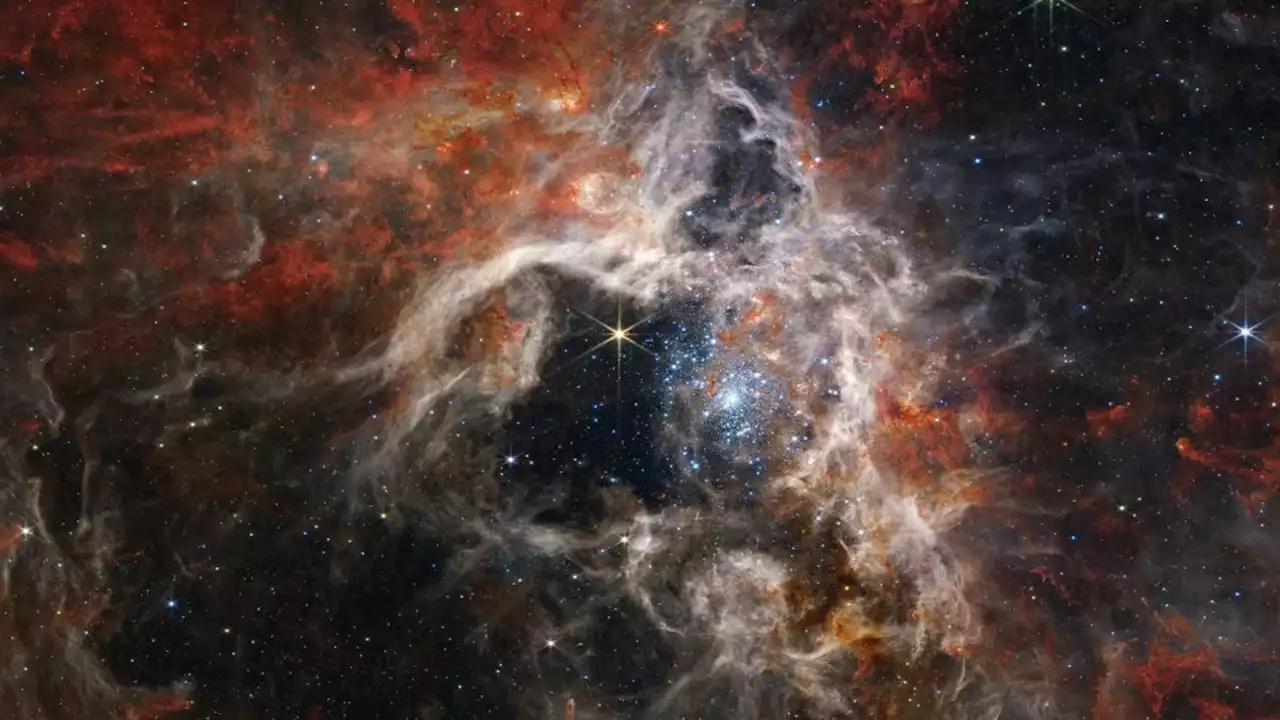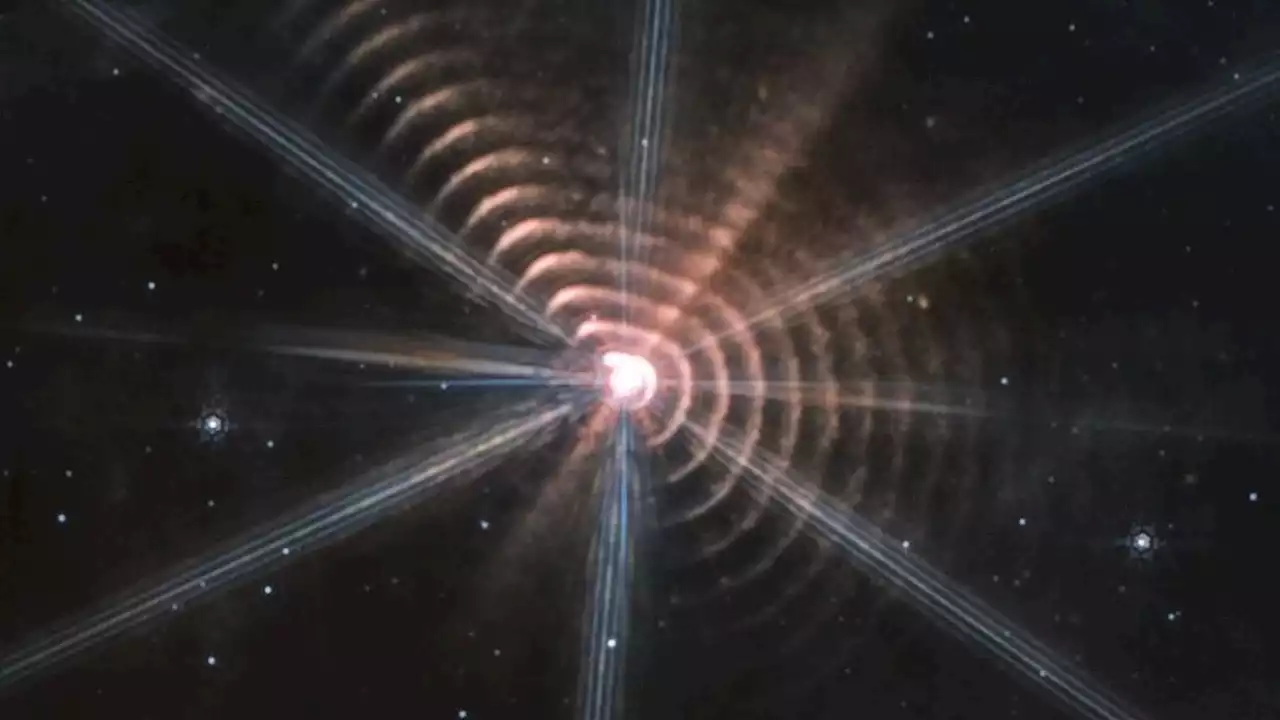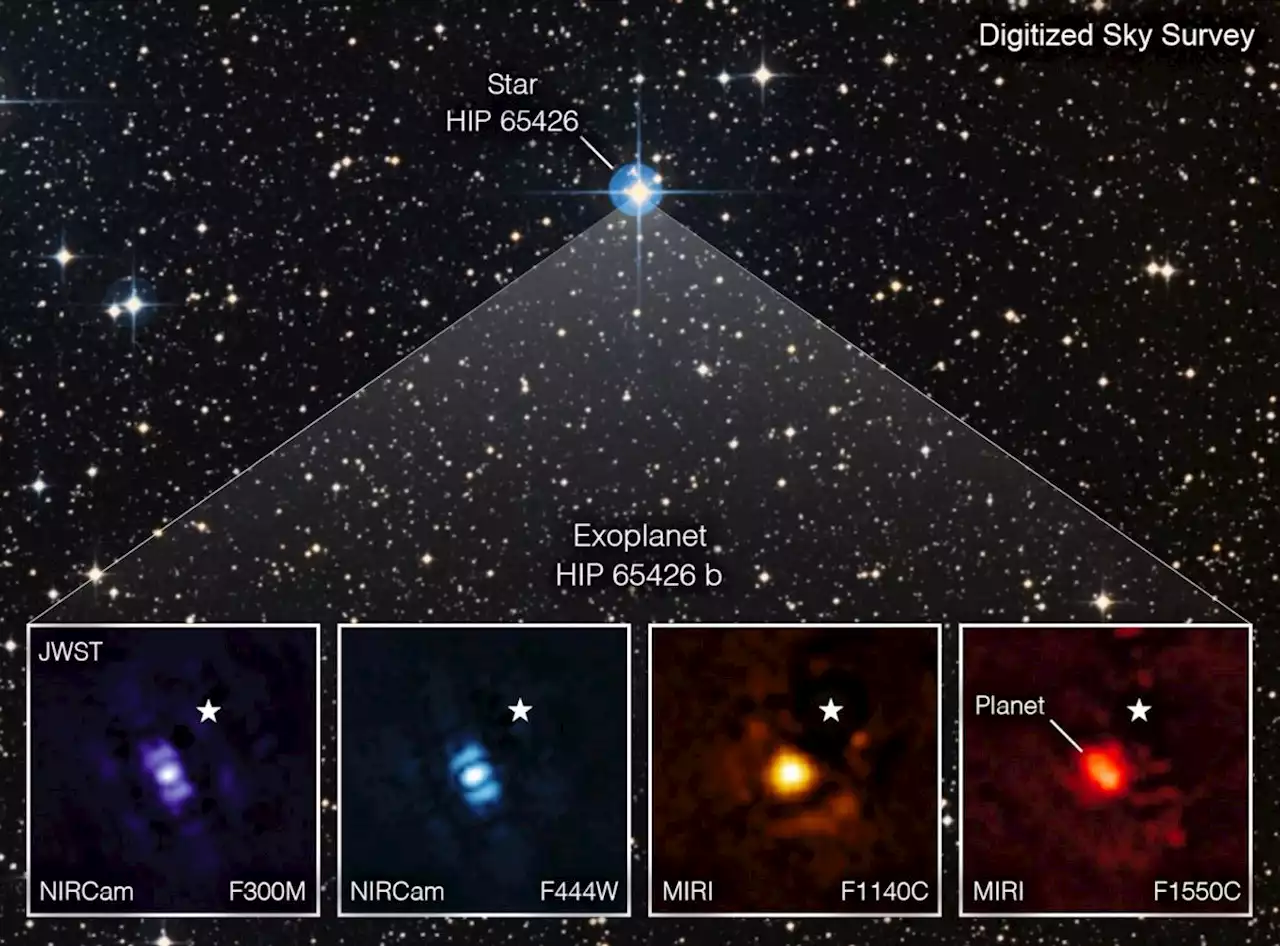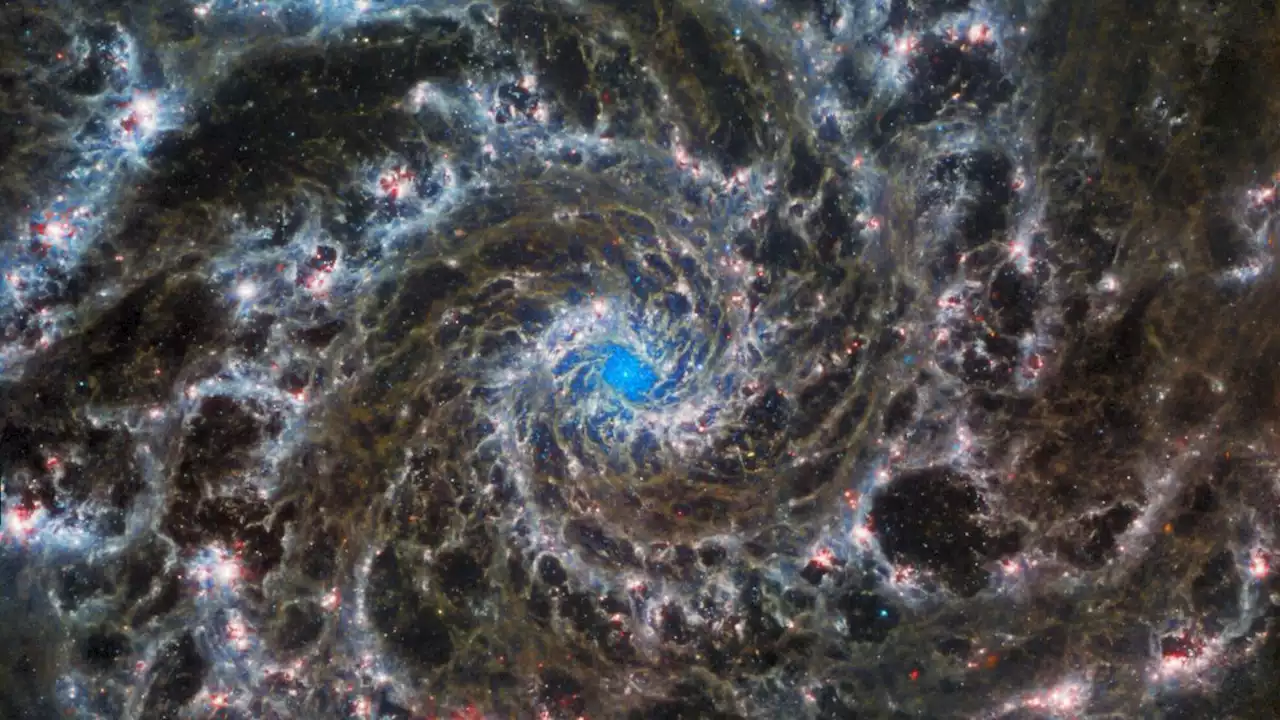The James Webb Space Telescope has captured a massive 123-megapixel mosaic image of the Tarantula Nebula that stretches 240 light-years across.
that stretches 240 light-years across and includes tens of thousands of never-before-seen young stars that were not visible with previous telescopes.
The Webb Team explains that scattered among those blue stars are still-embedded stars which appear red and are yet to emerge from what they describe as a “dusty cocoon” of the nebula. “To the upper left of the cluster of young stars, and the top of the nebula’s cavity, an older star prominently displays NIRCam’s distinctive eight diffraction spikes, an artifact of the telescope’s structure. Following the top central spike of this star upward, it almost points to a distinctive bubble in the cloud. Young stars still surrounded by dusty material are blowing this bubble, beginning to carve out their own cavity,” the Webb team continues.
“In this light, the young hot stars of the cluster fade in brilliance, and glowing gas and dust come forward. Abundant hydrocarbons light up the surfaces of the dust clouds, shown in blue and purple. Much of the nebula takes on a more ghostly, diffuse appearance because mid-infrared light is able to show more of what is happening deeper inside the clouds.
United States Latest News, United States Headlines
Similar News:You can also read news stories similar to this one that we have collected from other news sources.
 NASA’s James Webb Space Telescope captures 'cosmic tarantula' in new imageThe James Webb Space Telescope captured a detailed image of the Tarantula Nebula, located 161,000 light-years away from Earth.
NASA’s James Webb Space Telescope captures 'cosmic tarantula' in new imageThe James Webb Space Telescope captured a detailed image of the Tarantula Nebula, located 161,000 light-years away from Earth.
Read more »
 James Webb Space Telescope snaps mind-boggling image of Tarantula NebulaWebb has revealed new details of stellar nursery 30 Doradus, known as the Tarantula Nebula.
James Webb Space Telescope snaps mind-boggling image of Tarantula NebulaWebb has revealed new details of stellar nursery 30 Doradus, known as the Tarantula Nebula.
Read more »
 A new James Webb image shows ghostly ripple rings around a distant starThe James Webb Space Telescope captured images of 'ripple' rings around a distant star, and astronomers are scratching their heads over the new data.
A new James Webb image shows ghostly ripple rings around a distant starThe James Webb Space Telescope captured images of 'ripple' rings around a distant star, and astronomers are scratching their heads over the new data.
Read more »
 James Webb telescope captures its first-ever direct image of an exoplanetThe faraway 'super-Jupiter' is the first exoplanet to be photographed in infrared light.
James Webb telescope captures its first-ever direct image of an exoplanetThe faraway 'super-Jupiter' is the first exoplanet to be photographed in infrared light.
Read more »
 James Webb telescope captures ghostly image of a celestial nautilus 32 million light-years from Earth'Grand design' spiral galaxy shows the power of JWST's sharp new infrared observations.
James Webb telescope captures ghostly image of a celestial nautilus 32 million light-years from Earth'Grand design' spiral galaxy shows the power of JWST's sharp new infrared observations.
Read more »
